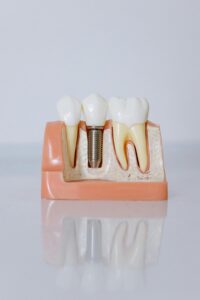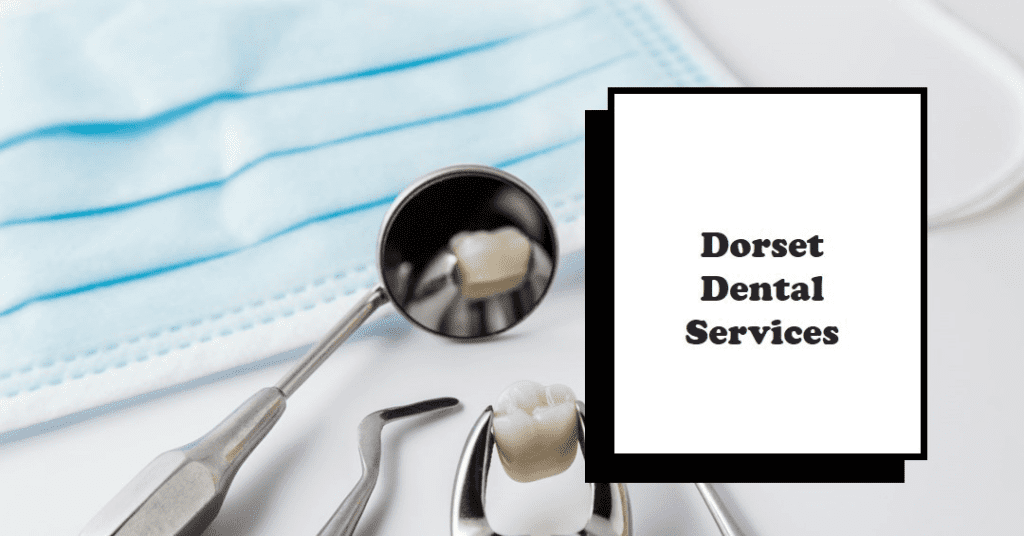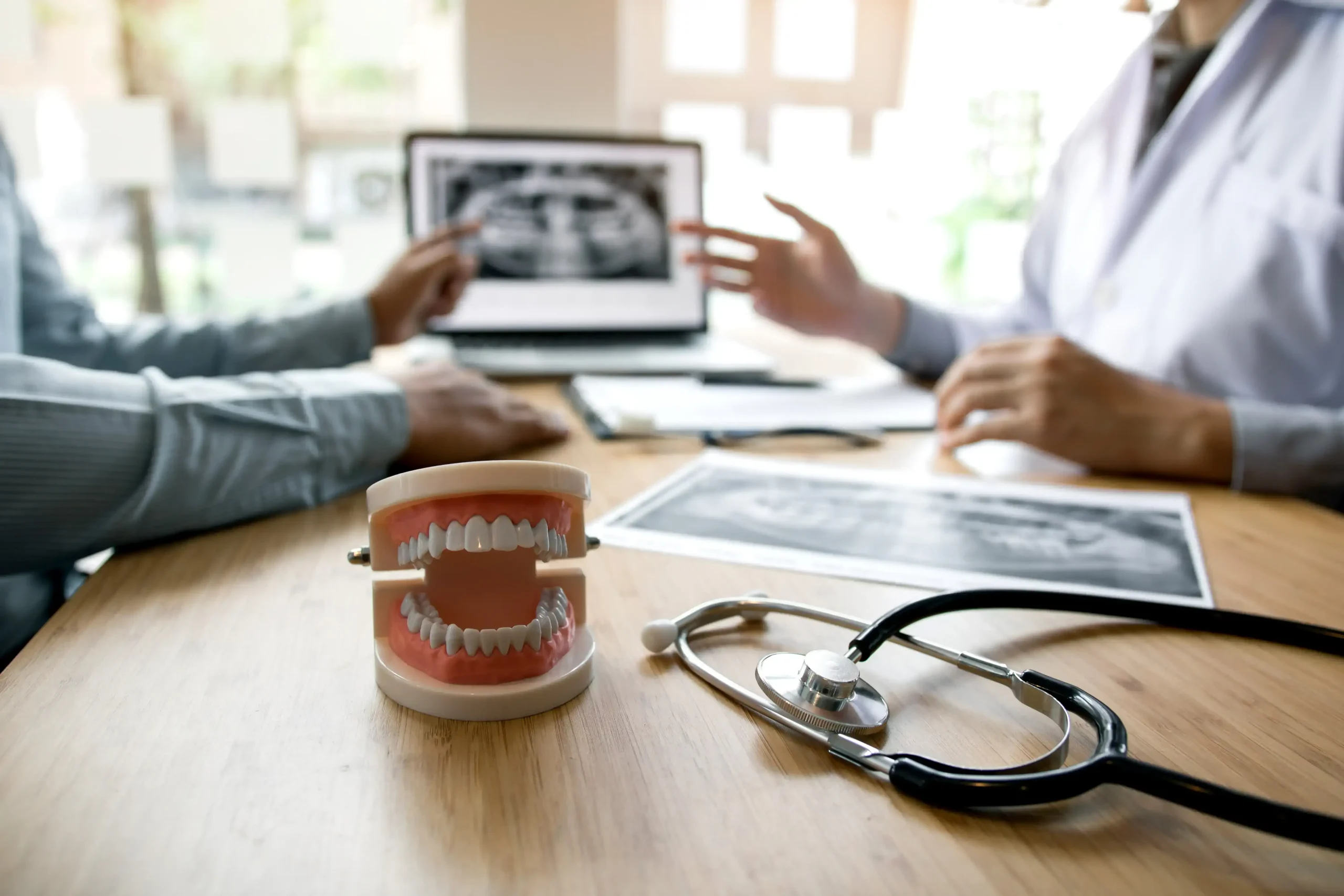Scarborough Dentist - Services that we Provide
Dental health is an integral part of overall well-being. In Scarborough, one dental office stands out for its commitment to providing comprehensive dental services: Dorset Dental.
Table of Contents
A List Of Our Dental Services
Family Dentistry
Family dentistry is a cornerstone of Dorset Dental. They provide dental care for all ages, ensuring that every member of the family has access to quality dental services. From routine check-ups to more complex procedures, they offer a wide range of services under one roof.
Cosmetic Dentistry
Cosmetic dentistry at Dorset Dental is more than just creating beautiful smiles. It’s about improving oral health and boosting self-confidence. Services range from teeth whitening and dental veneers to Invisalign treatment, a clear alternative to traditional braces.
Dental Implants
Dental implants are a durable and natural-looking solution for missing teeth. They function like natural teeth, allowing patients to eat, speak, and smile with confidence.
Teeth Whitening
Teeth whitening is a quick and effective way to brighten your smile. Whether it’s due to coffee, tea, or aging, Dorset Dental offers solutions to restore the natural whiteness of your teeth.
Sedation for Anxiety
For patients who feel anxious about dental procedures, sedation options are available at Dorset Dental. This ensures a comfortable and anxiety-free dental experience.
Same Day Emergency Care
Dental emergencies can happen at any time. That’s why Dorset Dental offers same-day emergency care to provide immediate relief and treatment.
The Importance of Regular Dental Check-ups
Regular dental check-ups are crucial for maintaining oral health. They allow dentists to detect issues early and provide appropriate treatment. Moreover, dental hygiene plays a significant role in overall health, and a balanced diet can significantly impact dental health.
The Dental Team
The dental team at Dorset Dental consists of experienced and qualified dentists committed to providing quality care. They work closely with patients to understand their dental needs and goals, ensuring a personalized treatment plan.
Patient Experience
From the process of becoming a patient to scheduling convenient appointments, Dorset Dental prioritizes patient comfort and personalized experiences. They strive to create a welcoming and friendly environment for all patients.
Special Topics in Dentistry
Cosmetic dentistry, dental emergencies, and pediatric dentistry are just a few of the special topics Dorset Dental covers. They aim to provide comprehensive care that addresses all aspects of dental health.
Location and Contact Information
Dorset Dental is conveniently located in Scarborough, making it easy for patients to access their services. Contact information is readily available for appointments or inquiries.
Payment Options
Understanding that dental care can be a significant investment, Dorset Dental accepts most insurance plans and offers flexible financing solutions.
Conclusion
Dorset Dental a Scarborough dentist is committed to providing high-quality dental care in Scarborough. A dental practice that encourages potential patients to reach out for more information or to schedule an appointment, ensuring a path to a healthier, brighter smile.
Frequently Asked Questions
Yes, we are! Scarborough Dental is located in Scarborough and proudly serves the Scarborough community and surrounding areas. A local Scarborough dentist!
Yes, we do! Our Scarborough Dental office a has team of dental professionals, including a talented dentist in Scarborough.
Yes, Dorset Dental is always welcoming new patients. Give us a call to book an appointment or visit our website to fill out a new patient form.
Yes, Dorset Dental offers a variety of dental treatments, including root canal therapy. Our dental professionals will ensure you receive professional dental care and treatment.
Yes, Our Scarborough Dental office offers restorative dental services, including dental crowns. Contact us to book an appointment and discuss your dental needs.
Yes, Our Scarborough Dental office has a dental hygienist on staff to support your oral health care needs.
Yes, Our Scarborough Dental clinic understands the importance of being available when an emergency occurs. Our dental professionals aim to see emergencies as soon as possible.
Dorset Dental offers a full range of dental services including restorative, cosmetic, and emergency dental services. Contact us to learn more about our services and how we can help with your dental needs.
The cost of dental treatment varies depending on the treatment required. Contact us to book an appointment and discuss treatment options and cost.
Yes, Our Scarborough Dental clinic offers a range of cosmetic dental procedures to help enhance your smile. Contact us to book an appointment and discuss your options.

DONT'T DELAY BOOK TODAY!
The Scarborough Dentist You Can Trust 🦷
A dental practice that encourages potential patients to reach out for more information or to schedule an appointment, ensuring a path to a healthier, brighter smile.
Latest Posts

Lost a Tooth During Black Friday Shopping? What to Do — and How Dorset Dental Can Help
Black Friday shopping in Scarborough can be hectic. With crowded stores, tight spaces, and the rush to snag the best deals, accidents happen — including unexpected dental injuries. If you end up with a knocked-out tooth, knowing what to do in the moment can make all the difference. As your trusted Scarborough Dentist and Family Dentist, Dorset Dental is here to guide you through the steps and provide fast, reliable Emergency care when you need it most. How Does a Black Friday Accident Lead to a Knocked-Out Tooth? You’d be surprised how often it happens: A sudden elbow in a packed checkout line Slipping on a wet mall floor A shopping cart collision Rushing during door-crasher sales No matter how it occurs, a knocked-out tooth is a true dental emergency — but with quick action, the tooth may still be saved. What To Do Immediately After a Tooth Gets Knocked Out 1. Stay Calm — Every Minute Counts Your best chance of saving the tooth is to see a dentist near me within 60 minutes. 2. Locate the Tooth Pick it up by the crown only. Avoid touching the root, as this can damage delicate tissues. 3. Rinse Carefully If the tooth is dirty, rinse briefly with milk or saline.Do not scrub or use soap. 4. Try to Put the Tooth Back Gently place it back in the socket and bite down softly on gauze.This helps preserve the root. 5. Keep It Moist If Reinsertion Isn’t Possible Place the tooth in: Milk A tooth preservation kit Inside your cheek Never let it dry out. 6. Call Dorset Dental Immediately We reserve space for Emergency dental visits.Call 416-261-2946 while you are on the way. How Dorset Dental Treats a Knocked-Out Tooth At Dorset Dental — your community Scarborough Dentist — we will assess the tooth and determine the best treatment: ✔ Reimplantation If the tooth is viable, we can carefully secure it back in place. ✔ Splinting We stabilize the tooth so it can heal properly over the coming weeks. ✔ Root Canal Treatment Often recommended after reimplantation to ensure long-term success. ✔ Replacement Options If the tooth cannot be saved, our Family Dentist team offers: Dental implants Bridges Cosmetic restorations We’ll help you choose the option that best restores your smile. Why Choose Dorset Dental in Scarborough for Emergency Care? Trusted Family Dentist serving the Scarborough Bluffs community Fast, reliable Emergency dental appointments Modern technology Compassionate, experienced team Convenient location at 119 Dorset Road Whether you’re searching for a dentist near me or need urgent help, Dorset Dental is here to support you. Final Thoughts A Black Friday shopping mishap doesn’t have to mean losing your smile. Quick action — and a trusted Scarborough Dentist — can make all the difference. If you or a loved one experiences a dental Emergency, call Dorset Dental right away at 416-261-2946. Our team is ready to help you get back to smiling with confidence. 0/5 (0 Reviews)

How a Dental Cleaning Supports Heart Health — And Why You Should Book Before Year-End
Most people know that a Dental Cleaning helps keep teeth bright and gums healthy — but many don’t realize it can also help protect your heart health. At Dorset Dental, your trusted Scarborough Dentist, we care about your oral health and your overall well-being. With the end of the year approaching, now is the perfect time to schedule your cleaning and maximize your dental insurance before your benefits reset. The Mouth–Heart Connection Your oral health and heart health are deeply linked. Research shows that gum disease (periodontal disease) is associated with an increased risk of heart problems, including heart disease, clogged arteries, and stroke. Here’s why: 1. Inflammation Travels Gum disease causes inflammation in the mouth. When untreated, that inflammation can spread through the bloodstream and contribute to inflammation in blood vessels — a major risk factor for cardiovascular disease. 2. Bacteria Enter the Bloodstream Harmful bacteria from infected gums can enter the bloodstream and attach to blood vessels, potentially contributing to plaque buildup and reduced blood flow. 3. Shared Risk Factors Lifestyle factors like poor diet, smoking, and stress affect both gum health and heart health. This makes routine dental care essential for your overall well-being. Why Regular Dental Cleanings Matter A professional Dental Cleaning removes plaque and tartar buildup that you cannot eliminate with brushing or flossing alone. Regular cleanings help: Reduce gum inflammation Prevent gum disease Lower harmful oral bacteria Promote healthier blood vessels and circulation At Dorset Dental, we provide gentle, thorough cleanings to help patients from Scarborough, the Bluffs, and surrounding communities maintain excellent oral and overall health. Use Your Dental Insurance Before It Expires Most insurance plans reset on January 1st — meaning unused benefits do not carry forward. Booking your dental cleaning now helps you: Maximize your dental coverage Prevent gum disease and support heart health Avoid the end-of-year rush and limited availability Start the new year with a clean, healthy smile If you haven’t used your 2025 cleaning or exam benefits yet, now is the best time to book. Visit Your Trusted Scarborough Dentist — Dorset Dental Whether you’re in Scarborough, the Bluffs, or nearby communities, Dorset Dental is here to support your health with comprehensive care and comfortable visits. 📞 Call us: 416-261-2946📍 119 Dorset Road, Scarborough, ON M1M 2S9💻 Book online anytime! 0/5 (0 Reviews)

Don’t Lose Your 2025 Dental Benefits — Schedule Your Appointment Before the Year Ends!
As the year comes to a close, life in Scarborough, especially around the Cliffside and Bluffs neighbourhoods, gets busy with holiday plans, family gatherings, and festive activities. But before you dive into the celebrations, don’t forget one important thing — your dental health! If you haven’t used your dental benefits yet, now is the perfect time to schedule your appointment at Dorset Dental in Scarborough before the year wraps up. 🦷 Why You Should Book Before December 31st Most dental insurance plans reset on January 1st, meaning any unused benefits for cleanings, exams, or treatments will not carry over into the new year. That means if you delay your visit, you could lose hundreds of dollars in coverage that you’ve already paid for through your premiums. At Dorset Dental, conveniently located near the Scarborough Bluffs and Cliffside Village, we want to help you maximize your benefits and keep your smile healthy and bright all year round. ✅ Use Your 2025 Benefits For: Routine cleanings and checkups Fillings, crowns, or other restorative treatments Whitening or cosmetic touch-ups before holiday photos Periodontal maintenance or gum care Orthodontic adjustments and follow-ups 📅 Appointments Fill Up Fast Our schedule fills quickly in November and December as patients in Scarborough, Cliffside, and the Bluffs area book last-minute appointments to use their benefits. To ensure you get a time that works best for you and your family, book your appointment as soon as possible. 💙 We’re Here to Help If you’re not sure what your insurance covers or how much of your benefits remain, our friendly team can help you review your plan and make the most of it. Don’t wait until it’s too late — your future self (and your smile) will thank you! 📍 Dorset Dental119 Dorset Road, Scarborough, ON M1M 2S9📞 Call us today: 416-261-2946 0/5 (0 Reviews)


